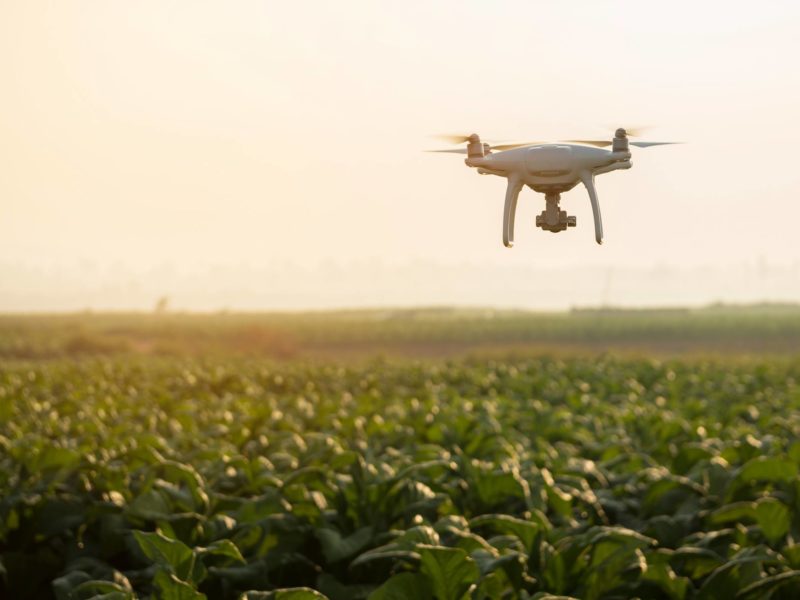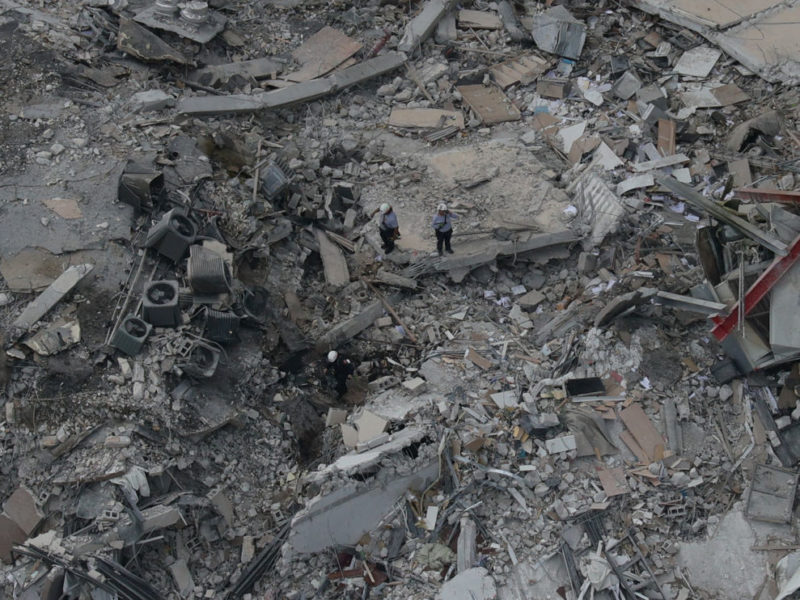Texas A&M Rescue Robotics Expert Shares Observations From Surfside
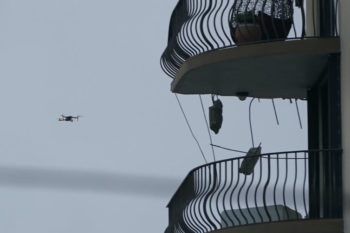
Texas A&M University’s Robin Murphy, a professor in the Department of Computer Science & Engineering, has responded to 30 natural and man-made disasters, including the World Trade Center site after the Sept. 11 terrorist attacks — where robotics were used for the first time in disaster response.
She recently returned from Surfside, Fla., where the 12-story Champlain Towers South condominium building partially collapsed last month. Murphy explains how rescue personnel used robotics to search through the rubble pile of one of the deadliest structural collapses in U.S. history.
How were drones and robots used to search for victims, inspect the damage and document evidence? What can you tell us about the different kinds of robots used and the tasks they performed?
The majority of robots at Surfside, and other disasters, are aerial vehicles, or drones. These drones are generally small and inexpensive, between $1,000 and $4,000 — you can buy them on Amazon. The more expensive ones carry a small thermal imager and can be outfitted with spotlights and two-way audio.
We saw five major uses for the drones during the response phase:
- Tactical life-saving operations, such as gaining situation awareness of the amount of damage, points of access, and danger to the responders, searching for victims, spotting fires and helping get water to the right spots, and general overwatch of the responders;
- Strategic operations and planning, such as mapping;
- Structural forensic evidence collection, which was handled by the National Institute of Standards and Technology Construction Safety Team with Miami-Dade Fire Rescue (MDFR) helping, and Florida State University (FSU) and myself trained as a backup;
- Public information for the families and the press that showed the scope of the disaster without violating privacy and respect for the missing; and
- General assistance, such as flying inside any condos wherever possible to look for pets and to help families document what was in their apartments. For pet lovers and our Vet School responders, please note that a lot of effort by MDFR and FSU was put into looking for pets, especially after a cat was seen on a balcony. There were several very challenging drone flights indoors by both MDFR and FSU, dodging rubble, but no sign of pets. Eventually as a last ditch effort, responders got into a man lift and put out an animal trap on the balcony, but to no avail.
How long were you in Surfside, and what was your role in assisting first responders at the site of the building collapse?
I was in Surfside for eight days assisting Florida State University’s Disaster Incident Response Team, an official state of Florida asset assigned to Florida Task Force 1 (FL-TF1). FL-TF1 is operating under the direction of the Miami-Dade Fire Rescue Department. The FSU team led by David Merrick was called in immediately to provide additional drones and mapping expertise for the response. Miami-Dade Fire Rescue has been providing “as needed” and “on demand” tactical flying, flying 24/7 from right after the collapse — starting in the dark using thermal imagery and onboard spotlights. FSU has been providing the imagery that is used as the base maps for responders, as well as for planning.
Drone mapping is still fairly new at a response because it requires specialized software for collecting and post-processing drone imagery. At the start of each shift, the responders working in the rubble download the latest map from the drones to their mobile devices so that they have the most accurate information for searching and dropping pins during the search. Essentially they are the “Google Earth” of the response and recovery. FSU also provides elevation maps and general maps three to seven times during the day depending on what incident command needs. They also flew and created a 3D reconstruction of the rubble and standing portion of the building the afternoon before it was demolished.
While my group pioneered the use of drones for disasters, with the first use at Hurricane Katrina (2005), FSU is the world leader in the use of drones for disasters, and has developed procedures and training for the state of Florida and the Federal Emergency Management Agency that we are incorporating into procedures for the state of Texas. My lab, and my colleagues Camille Peres (School of Public Health) and Ranjana Mehta (Industrial & Systems Engineering), work with Merrick’s group through the Center for Robot-Assisted Search and Rescue (CRASAR), which used to be a Texas A&M Engineering Experiment Station center but is now a nonprofit. FSU came and assisted us with Hurricane Harvey, and we assisted them with Hurricanes Irma and Michael, plus we jointly flew for the Kilauea volcanic eruption. We have had multiple National Science Foundation (NSF) grants together on the use of drones, human-robot interaction, and computer vision/machine learning for disasters.
My role at Surfside was minor. I was there to support FSU with the drones and while I got to fly two missions, I was mostly there to help them fly to document the rubble in ways that can help quantify what ground and aerial robots need to do in the future.
I was also able to make connections. I reached out and connected the NIST Construction Safety Team, which is conducting the forensic investigation, with the drone teams, which gave NIST greater capabilities for collecting forensic evidence. I led development of a NSF RAPID grant for FSU, Texas A&M and Carnegie Mellon to collect and analyze the robot data.
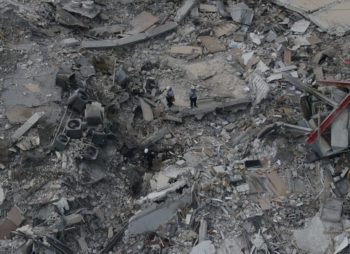
What ground robots were used? What are the advantages of using ground robots at building collapses to augment the work of human responders? Are there any challenges in using robots in a rubble environment?
Ground robots were not used extensively at Surfside and that seems typical in general. I was able to document only one mission and heard of a second mission, but there may have been more. In contrast, FSU flew 169 missions from June 25-July 7 (the response ended on July 7 and recovery phase began) and MDFR probably flew that many as well.
It is difficult to get information since the recovery is still active, there are many agencies involved, and a lot of data has to be approved for release; we’ll know more in a few months. In both missions, they were bomb squad robots, about the height of a motorcycle but twice as wide. Their only advantage is being able to go into standing — but unsafe — portions of a building, which reduces the risk to the responders and saves time since they don’t have to shore it up to make it safe.
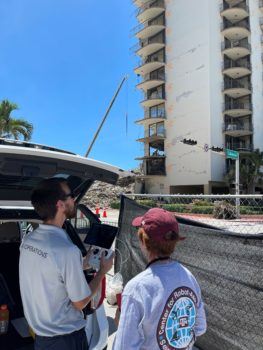
Some small throwable robots, First Look, were shipped down but not used that I know of. The idea there is that you can throw them up and into the upper stories of a building or over a wall, or in this case, a mound of rubble. They were from one of the teams that I worked with at the World Trade Center when CRASAR was just started. The collapse did not appear to use any of the much smaller, tethered robots — robots the size and shape of a snake or ones that look like a miniature lunch-box sized tank, that we have used at 9/11 and the Berkman Plaza collapse, and that have been used at the Hackensack parking garage collapse and the Mexico City Earthquake.
The advantage of those robots is that they can go into tiny voids, some as small as 3 to 6 inches wide, and usually holes less than 1.5 feet wide — far too small for a person or dog. And they often can go further into the rubble than a boroscope or camera on a wand, which may get only a few feet — indeed, robots at the World Trade Center were going about 60 feet into the rubble. Many of the robots can still function in high heat, which means they can crawl through areas still on fire to get to an area where there might be a survivor. Plus they often have two-way audio, which means if a survivor is found, responders can talk to them. We had a wonderful practice session with the medical members of Texas Task Force 1 a few years ago.
Besides helping search for survivors, the robots in the rubble give the structural specialists an inside view of the rubble. One described it as a pile of pick up sticks: you don’t want to just start moving debris because you don’t what may cause a secondary collapse and kill the people you were trying to rescue. But with a robot looking from the inside, experts can get a better, real-time understanding of all those pick up sticks and if moving something is causing something else to wobble.
On one hand, it is wonderful that a robot can be used to do multiple things simultaneously to help with the response. On the other, designing user interfaces and work processes that don’t cognitively overload the responders with too much information or at the wrong time is hard, and that has been a major aspect of our NSF- and DARPA-funded research.
Unfortunately, ground robots are rare because they are very specialized. And since, thankfully, there are few building collapses, there is no economic incentive. Whereas a $1,000 drone can be used for mapping, ground robots for rubble run around $50,000, which is pretty pricey to maybe never use. As we saw with the nuclear accidents, specialized robots for a nuclear accident were old, and no one was really familiar with using them, so those robots didn’t get used. Instead, military bomb squad robots, which get used every day by the Army and fairly frequently by large police departments, were the workhorses. Meanwhile, drones are used by most metropolitan fire and law enforcement department on a weekly basis. So you go with what you know and trust. Accelerating adoption is something that we’ve been working on with Jason Moats over at TEEX.
What other building collapses have you responded to during your career?
In terms of building collapses, I have been at four: 9/11 World Trade Center (which was the first use of robots for response), the Berkman Plaza parking garage collapse in Jacksonville, Fla. (2007), Cologne, Germany archives building collapse (2009), and the Fukushima Daiichi nuclear accident (2011), plus two mine disasters and one earthquake.
Is there anything else you’d like to share about your experience and observations in Surfside?
Two things, actually. One is that I wore my maroon Texas A&M ball cap whenever hard hats were not needed. Lots of responders commented on it. Everyone knew the Aggie color and logo.
The other is that Surfside reminded me a great deal of the World Trade Center. It’s the 20th anniversary so it has been on my mind, but it more so reminded me of the Berkman Plaza collapse. Berkman Plaza was also a pancake collapse and also had a portion still standing. Surfside and Berkman Plaza were about the same size — about two acres actually affected. In Jacksonville, one worker was killed, a single father with small kids. I will always remember how hard the Jacksonville Fire Rescue Department responders worked to try to search through the rubble and how much they cared. And I saw that effort and caring at Surfside as well. But the loss of life at Surfside was so much larger and that adds an even greater sense of tragedy and horror for the victims — with even more admiration for the responders. And a bit of pride to see that drones were helping them.
Media contact: Caitlin Clark, caitlinclark@tamu.edu

